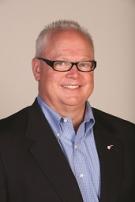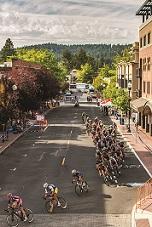
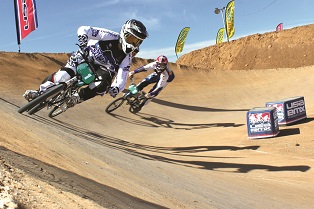
USA Cycling is the official governing body recognized by the U.S. Olympic Committee for all disciplines of competitive cycling in the United States, including road, track, mountain bike, BMX and cyclo-cross. It includes more than 74,000 cyclists, more than 2,750 clubs and teams and 34 local associations. USA Cycling sanctions more than 3,000 events each year that equates to more than 650,000 racer days per year.
Development of Up-and-Coming Athletes
USA Cycling has a dual mission – to achieve sustained success in international cycling competition and grow competitive cycling in America. One of our biggest investments is in athlete development. For example, we recently announced a new year-round training facility in in the Limburg municipality of Sittard-Geleen in the Netherlands. Approximately 150 U.S. cyclists and staff will be able to use the Limburg location to train and race for road, mountain bike, track and cyclo-cross. This gives us the ability to serve more athletes throughout the year. We will support more than 4,000 racing days per year through our athlete development programs in Europe.
USA Cycling conducts a large number of talent identification camps around the United States each year. We also have a very strong Collegiate program with more than 400 colleges and universities participating across the U.S. Collegiate racing has been the entrée to the sport for some of our top riders.
Tools for Growth
The sport has grown over the past 10 years and continues to grow, with races at all levels being held in towns and cities across the U.S. We’re aware, though, that there are more challenges in securing road and mountain bike courses. Police costs are increasing and acquiring the proper permits in each municipality can be difficult. USA Cycling is building infrastructure to educate, certify and help race directors do their job easier and more efficiently and encourage continued growth.
We’ve spent a lot of energy and resources to create a much more efficient online experience. Now, riders can take out their smartphone and pull up a copy of their license to show to a race director. They can also check out their race results and their ranking, see how they’re doing in relation to how their friends and protagonists are doing – a lot of interaction they couldn’t do previously on the USA Cycling website. We are migrating to a ‘green,’ paperless system.
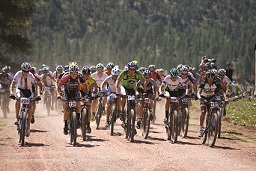
USA Cycling is also committed to helping race directors mitigate risk. We have a race director certification program that allows people to become better trained and better prepared race directors. We teach them how to host a safe, quality event that leaves a small environmental footprint. This training creates a community of certified race directors that can share best practices. We also offer a comprehensive race day insurance program that covers riders, race directors, sponsors, volunteers and cities. In addition, we emphasize the importance of keeping communities supportive of race events in their area so that they welcome them back each time.
Anti-Doping Measures: The RaceClean Agreement
One of USA Cycling’s biggest announcements recently, and one we are very proud of, is the formalization of the RaceClean™ agreement with the U.S. Anti-Doping Agency (USADA). The RaceClean™ program is an extensive anti-doping effort to facilitate increased in and out competition testing in cycling in the U.S. It is the most extensive program undertaken by a national governing body and will include testing in several disciplines and at a variety of competition levels, from grassroots to professional. There is a special section on our website, http://www.usacycling.org/usa-cycling-raceclean-program.htm pertaining to the program.
What has been interesting to us has been the fact that not only has the RaceClean™ program been very well-received but all the stakeholders – race directors, teams, riders and local associations – are involved and supportive. Everyone is committing funds to support the RaceClean program and it will only increase over the years. We’re very proud because it makes a good, strong anti-doping statement.
Trends in Cycling
We have seen tremendous growth in cyclo-cross during the past five years. Participation has increased dramatically, and the cycling manufacturers are building and selling a lot more cyclo-cross bikes. In the last year, we had more racer days in cyclo-cross than in mountain bike, which is amazing. The season for cyclo-cross runs from September to the end of January, which encompasses the off-season for road and mountain biking so it brings riders from both disciplines.
Cyclo-cross is a good one-day event because it uses shorter races on a short, circuit course – 2.5 kilometers to 3.5 kilometers in length. This means a lot of people can participate in that one cyclo-cross race day. It doesn’t require the huge commitment of setting up a road race or a cross-country mountain bike course. Races are 20 to 45 minutes long for various categories, and an hour for the pro men. Everyone rides virtually the same course, which makes it fun for the beginners because they can ride in the morning and then watch the pros on the same course in the afternoon. You’re all sharing the same space and there’s the ability to meet and interact with the pros, who are very affable. This is not really an experience you’d get if you went to watch the Tour de France.
The northeast and the northwest are the traditional hotbeds for cyclo-cross and because it’s a winter sport, those areas create some of the toughest conditions. That’s part of the appeal for the racers, though – nastier the weather, the better the experience, as far as they’re concerned. But as the sport has grown, we’ve seen cyclo-cross racing increasing in warm-weather venues like California and the south.
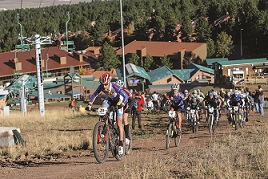
A lot of people out there are putting the miles on their bikes but they’re not racing. Some may have raced at one time but stopped racing for various reasons. We’ve seen the mass participation rides continue to increase in the number of events and participation. Recently, the Gran Fondo, a mass participation event with some elements of racing, has become popular in the U.S. Gran Fondos have taken place in Europe for many years and as many as 25,000 people will ride in a Gran Fondo.
In a Gran Fondo, the front of the field is pretty much racing but without officials. There are also people who just want to ride, take their time and enjoy their friends, the scenery and the exercise. For some people, a Gran Fondo could be a first step to jumping into a competitive race with rules, officials, etc.
The Gender Gap
One of USA Cycling’s initiatives is to increase the number of women participating in the sport overall. Currently, only about 13% of our members are female and that number has not fluctuated over the years.
We know there is an opportunity to get more women into the sport. Women are buying expensive bicycles but, percentage-wise, very few are racing. And because we have so few women in the sport, a lot of age and skill divisions get combined in women’s racing. That’s discouraging for the women because they’d rather compete against someone of similar age and ability. Unfortunately, that would leave race directors with the problem of having to run a lot of very small races. So ultimately, we have to figure out a way to incentivize more women and get them into the sport so the competition is more fair. And we need to incentivize race directors to include more women’s races.
Our four-year strategic plan includes positioning the U.S. as the top cycling country in the world. We want to win more Olympic medals than any country and we’re very focused on that. But we’re looking at all aspects of the sport as well.

